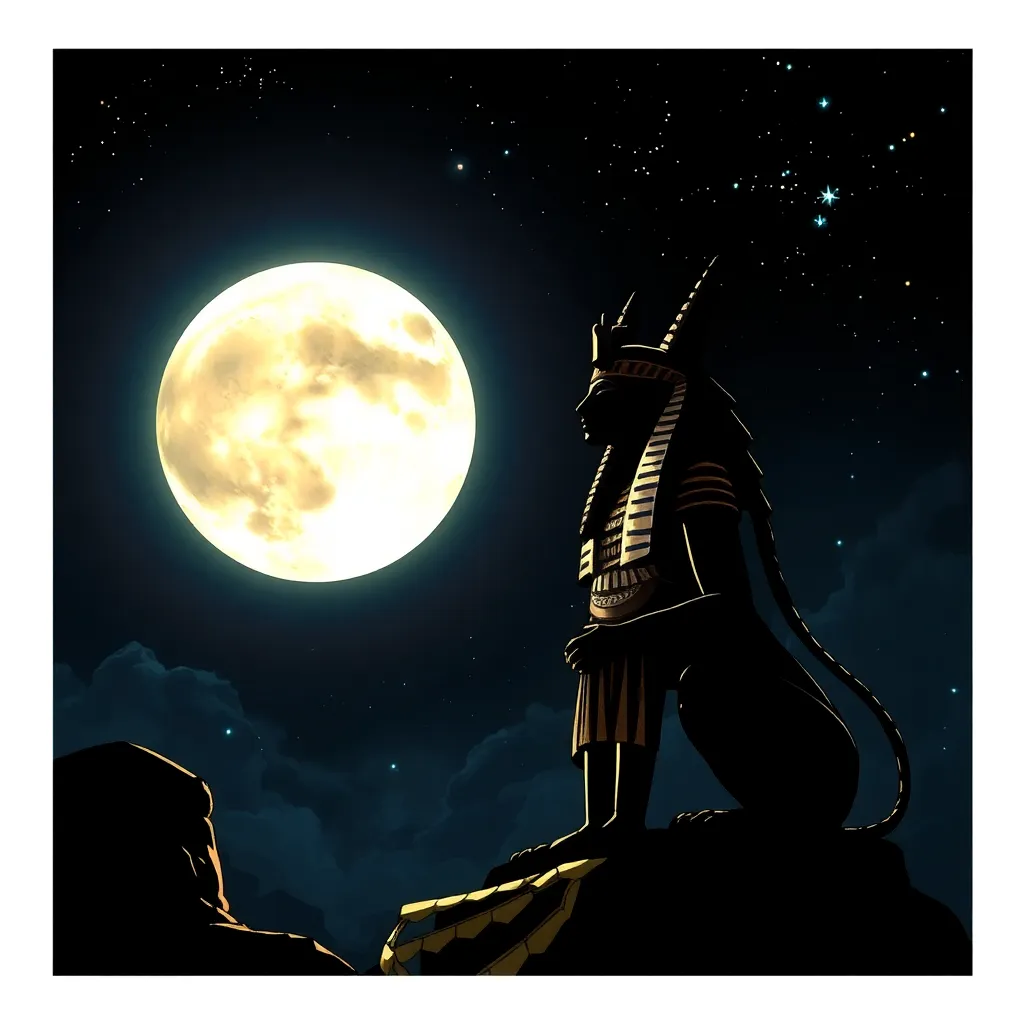The Role of the Moon: Khonsu and the Night Sky
I. Introduction
The Moon has captivated human imagination across cultures and civilizations, serving as a symbol of mystery, change, and the passage of time. In various mythologies, the Moon is often associated with deities that embody its qualities and influence on life. In ancient Egyptian mythology, the lunar deity Khonsu holds a significant place as both a god of the Moon and a harbinger of time and fertility. This article delves into the intricate role of Khonsu within the rich tapestry of Egyptian mythology and highlights the Moon’s profound impact on ancient Egyptian culture.
II. The Moon in Ancient Egyptian Mythology
The cultural significance of the Moon in ancient Egypt is profound. It was often seen as a counterpart to the Sun, representing the duality of light and darkness, day and night. The Egyptians observed the Moon closely, associating its phases with various aspects of life, such as agriculture, festivals, and timekeeping.
In the pantheon of Egyptian mythology, several lunar deities existed, each with distinct roles and attributes. Among these, Khonsu stands out as a prominent figure:
- Khonsu: The primary lunar deity, often depicted as a young man.
- Thoth: The god of wisdom, writing, and the Moon, who played a significant role in the afterlife.
- Selket: Sometimes associated with the Moon and fertility, reflecting its nurturing aspects.
Khonsu’s place among these deities illustrates the Egyptians’ reverence for the Moon and its cycles.
III. Khonsu: Attributes and Symbolism
Khonsu is often depicted as a youthful figure, embodying the Moon’s beauty and vitality. His representations include:
- A man with a sidelock of youth, symbolizing his connection to time and growth.
- A lunar disc atop his head, signifying his dominion over the night sky.
- Holding a sistrum or ankh, representing life and fertility.
The symbolism associated with Khonsu extends beyond his physical appearance. He is often linked to:
- Time: As a lunar deity, Khonsu embodies the cyclical nature of time, marking the passage of days and seasons.
- Fertility: The Moon’s phases were believed to influence agricultural cycles, thus linking Khonsu to crop fertility and abundance.
- Protection: Khonsu was seen as a protector of travelers during the night, guiding them safely through darkness.
IV. The Moon’s Influence on Agriculture and Daily Life
The lunar cycles played a critical role in ancient Egyptian agricultural practices. Farmers relied on the Moon’s phases to determine the optimal times for planting and harvesting crops. Key aspects include:
- New Moon: A time for planning and preparing the soil.
- Waxing Moon: Associated with growth, ideal for planting seeds.
- Full Moon: A time for harvesting and celebrating abundance.
The Moon also influenced festivals and religious ceremonies in ancient Egypt. Festivals dedicated to Khonsu often celebrated the lunar cycle, highlighting its importance in the spiritual life of the Egyptians.
Daily life was intricately connected to the lunar calendar, with many activities scheduled according to its phases. The Egyptians observed the Moon’s cycle as a guide for:
- Religious observances
- Seasonal changes
- Social activities and gatherings
V. Khonsu’s Mythological Narratives
Khonsu appears in numerous myths, often intertwining with other deities. Some key narratives include:
- The Tale of Khonsu and Amun: Khonsu was said to have aided Amun in defeating enemies, showcasing his protective nature.
- Khonsu and Thoth: Their relationship highlights the balance of time and wisdom, with Khonsu representing the Moon’s temporal aspect.
These stories reflect Khonsu’s significance in Egyptian culture, reinforcing themes of protection, time, and fertility.
VI. The Moon in Astronomy and Timekeeping
The ancient Egyptians were skilled astronomers, and the Moon played a crucial role in their understanding of celestial movements. They observed the Moon’s phases and cycles, leading to sophisticated methods of timekeeping:
- They divided the lunar calendar into months based on the Moon’s phases.
- Their calendar featured 12 months, each with 30 days, followed by additional days to align with the solar year.
Khonsu’s association with timekeeping is significant, as the Egyptians viewed him as a guide through the intricacies of time and the universe.
VII. The Legacy of Khonsu and Lunar Worship
Khonsu’s impact on Egyptian religion endures, as his worship reflects the broader significance of lunar deities in human culture. Key aspects of his legacy include:
- Influence on religious practices and festivals dedicated to the Moon.
- Modern interpretations of lunar worship in various cultures, showing the timeless fascination with the Moon.
- The Moon’s ongoing influence on art, literature, and spirituality in contemporary society.
VIII. Conclusion
In conclusion, Khonsu holds a vital place in ancient Egyptian mythology, embodying the Moon’s power and influence. The cultural significance of the Moon is reflected in agricultural practices, religious ceremonies, and daily life of the Egyptians. The enduring fascination with the Moon transcends time, as it continues to inspire wonder and reverence in contemporary cultures. The interplay between mythology and astronomy highlights our shared human experience, reminding us of the celestial forces that shape our world.




